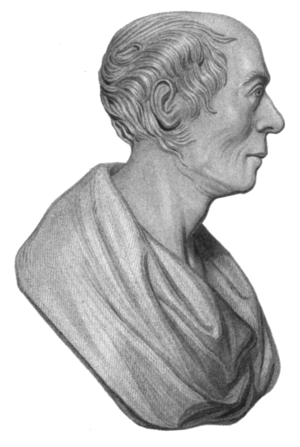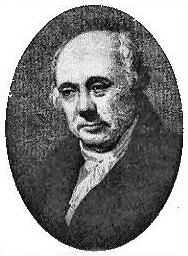William Symington facts for kids
William Symington (1764–1831) was a clever Scottish engineer and inventor. He lived during a time called the Georgian era, when many new things were being invented. Symington is most famous for building the first useful steamboat, called the Charlotte Dundas. His engine was very good for its time. It helped shape how later steamboats and steamships were built. Even though Symington faced money problems later, he is still remembered as a key inventor of the early Industrial Revolution.
Contents
Early Life and Education
William Symington was born in Leadhills, Scotland. His family was "respectable but not wealthy." His dad was a mechanic at the local mines.
William's parents wanted him to become a minister. But he loved engineering and wanted to use his good education for that. In 1785, he joined his brother George. George was trying to build a steam engine in Wanlockhead. William impressed a mining company manager, Gilbert Meason. So, in 1786, he went to the University of Edinburgh for science classes.
His brother George had already built a steam engine. It was the second one in Scotland to use James Watt's design.
Making Steam Engines Better
Symington quickly saw how to make Watt's engine even better. He wanted to combine Watt's efficient design with the simpler design of Thomas Newcomen. Gilbert Meason encouraged him. In 1787, Symington got a patent for his improved engine.
This new engine worked by condensing steam under a second piston. This pushed the piston down when fresh steam came in. It also pushed out the water. The main piston moved because of atmospheric pressure and a vacuum created by the steam.
After finishing his engine, Symington wrote about its benefits. Meason and his friends helped share this information.
The First Steamboat Trials
A banker named Patrick Miller of Dalswinton had been trying out boats. His boats had two hulls and used paddlewheels. He asked Symington to put his new steam engine into one of these boats.
On October 14, 1788, they tested the boat on Dalswinton Loch. The test was a success! The boat reached a speed of 8 kilometers per hour.
An artist named Alexander Nasmyth drew a picture of the boat during its trial.
The Canal Steamboat
After the first successful test, a bigger engine was ordered. This engine would be used in a boat on the Forth and Clyde Canal.
The new engine was much larger. It was put into another boat with two hulls and paddlewheels. This boat was 60 ft long (18 m). The first test was on December 2, 1789. It didn't go well because the paddlewheels broke when they tried to go faster.
Patrick Miller, who was paying for the project, allowed for repairs. On December 26 and 27, more successful tests were done.
Engines for Mines and Mills
Even though Symington is known for steamboats, he also built engines for mines and mills.
His first mining engine was built in Wanlockhead in 1790. He then built engines in Sanquhar and London. In 1792, he built a large pumping engine. He also built an engine for James Bruce's coal mine. This led him to live near Falkirk. He later became a consultant for the Carron Company.
In 1793, he created a new type of crank drive. He built about fifteen of these successful engines. By 1808, Symington had built at least thirty-two engines.
More Steamboat Ideas
Thomas Dundas, 1st Baron Dundas wanted to try more steamboat ideas. He had many businesses along the coasts. The Forth and Clyde Canal was very important to him. Steam power could make boats move faster through the canal. The Dundas family was very powerful at that time.
In 1800, Lord Dundas suggested using a steam engine from Symington on a boat. The company directors agreed.
A drawing of Symington's engine was found recently. It showed an engine powering a wheel inside the boat's hull. The boat was built in Grangemouth and tested in June 1801 on the River Carron. It moved easily there. But it didn't work as well on the canal, so the company rejected it.
By 1800, James Watt's patent had ended. So, Symington worked on a new type of engine called a horizontal engine. He got a patent for it in 1801. This design was very advanced for its time. It wasn't widely used until 1825.
The Charlotte Dundas
The Canal Company wasn't happy with the first steamboat. So, Lord Dundas supported Symington in building a second one. Symington showed a model of the new boat to Dundas. He named it Charlotte Dundas after one of Dundas's daughters. John Allan built the boat's hull, and the Carron Company made the engine.
The Charlotte Dundas first sailed on January 4, 1803. Lord Dundas and his family were on board. Everyone was happy with what they saw. Symington wanted to make it even better. Another test happened on March 28. This time, the steamboat pulled two loaded boats through the canal. It traveled 18½ miles in 9½ hours!
The Charlotte Dundas was the first boat to not just move itself, but also to pull other boats. But the Canal Company decided not to build more steamboats, which disappointed Symington. Lord Dundas invited Symington to meet the Duke of Bridgewater. The Duke wanted to order eight new boats for his canal. However, the Duke died just days before the trial was supposed to happen. This was another big setback for Symington.
Managing Coal Mines
Besides building engines, Symington also managed coal mines. He was called a 'viewer'. His first job as a manager was in 1794. He earned £100 a year and got a house. This job ended in 1800. Then, Symington managed the Grange colliery near Bo'ness.
In 1804, he joined a business to manage the Callendar colliery in Falkirk. A new pump was needed there. This allowed Symington to create a 'lifting engine'. He might have built one for the Wanlockhead mines in 1789.
However, the Callendar project ended badly. Symington lost a court case in Edinburgh in 1810.
Later Life and Legacy
Because of the problems with Patrick Miller, Lord Dundas, and the court case, Symington lost a lot of money. In 1825, a Member of Parliament, Ronald Craufurd Ferguson, asked the government to help Symington financially. Symington did not get a regular pension. But the government gave him two payments of £50 and £100.
In 1829, Symington was sick and in debt. He and his wife moved to London to live with their daughter. William Symington died in 1831. He was buried in St. Botulph's churchyard.
Honours and Memorials
In 1890, a statue of Symington was put in Edinburgh. It is now in the National Museum.
In 1891, a tall monument shaped like an obelisk was built for Symington. People raised money for it in his hometown of Leadhills. The monument is still there today.
In 2023, William Symington was added to the Scottish Engineering Hall of Fame.



